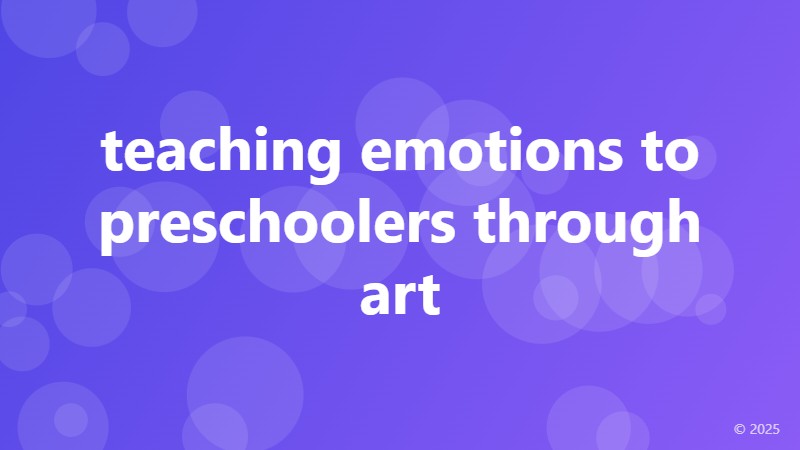teaching emotions to preschoolers through art

Unlocking Emotional Intelligence in Preschoolers through Art
As early childhood educators, we know that teaching emotions to preschoolers is crucial for their social, emotional, and cognitive development. While it may seem like a daunting task, incorporating art into your lessons can make it a fun and engaging experience for your young students. In this article, we'll explore the benefits of teaching emotions through art and provide you with practical tips to get started.
The Importance of Emotional Intelligence in Preschoolers
Emotional intelligence refers to the ability to recognize, understand, and manage one's emotions. In preschoolers, emotional intelligence lays the foundation for future social skills, empathy, and academic success. By teaching emotions to preschoolers, you can help them develop healthy relationships, regulate their emotions, and build resilience.
Why Art is an Effective Tool for Teaching Emotions
Art provides a unique opportunity for preschoolers to express and explore their emotions in a non-verbal and non-threatening way. Through art, children can:
- Identify and label their emotions
- Develop empathy and understanding towards others
- Practice self-regulation and emotional control
- Build confidence and self-esteem
Practical Strategies for Teaching Emotions through Art
Here are some engaging and easy-to-implement art activities to teach emotions to preschoolers:
Emotion Masks: Cut out different facial expressions from paper plates or construction paper. Have children decorate their masks with markers, glitter, or other materials. Then, ask them to wear their masks and act out different emotions, such as happiness, sadness, or anger.
Feeling Faces Collage: Gather various facial expressions from magazines or print them out. Have children create a collage of different faces, labeling each one with an emotion (e.g., "happy," "scared," or "angry"). This activity helps children recognize and identify emotions in themselves and others.
Emotional Landscapes: Provide children with paper, paint, or crayons, and ask them to create a landscape that represents how they're feeling. This activity encourages children to express and explore their emotions in a creative and non-verbal way.
Conclusion
Teaching emotions to preschoolers through art is a powerful way to foster emotional intelligence, creativity, and social skills. By incorporating art into your lessons, you can create a safe and engaging environment for your young students to explore and understand their emotions. Remember, the key is to keep it fun and interactive, allowing children to develop at their own pace.